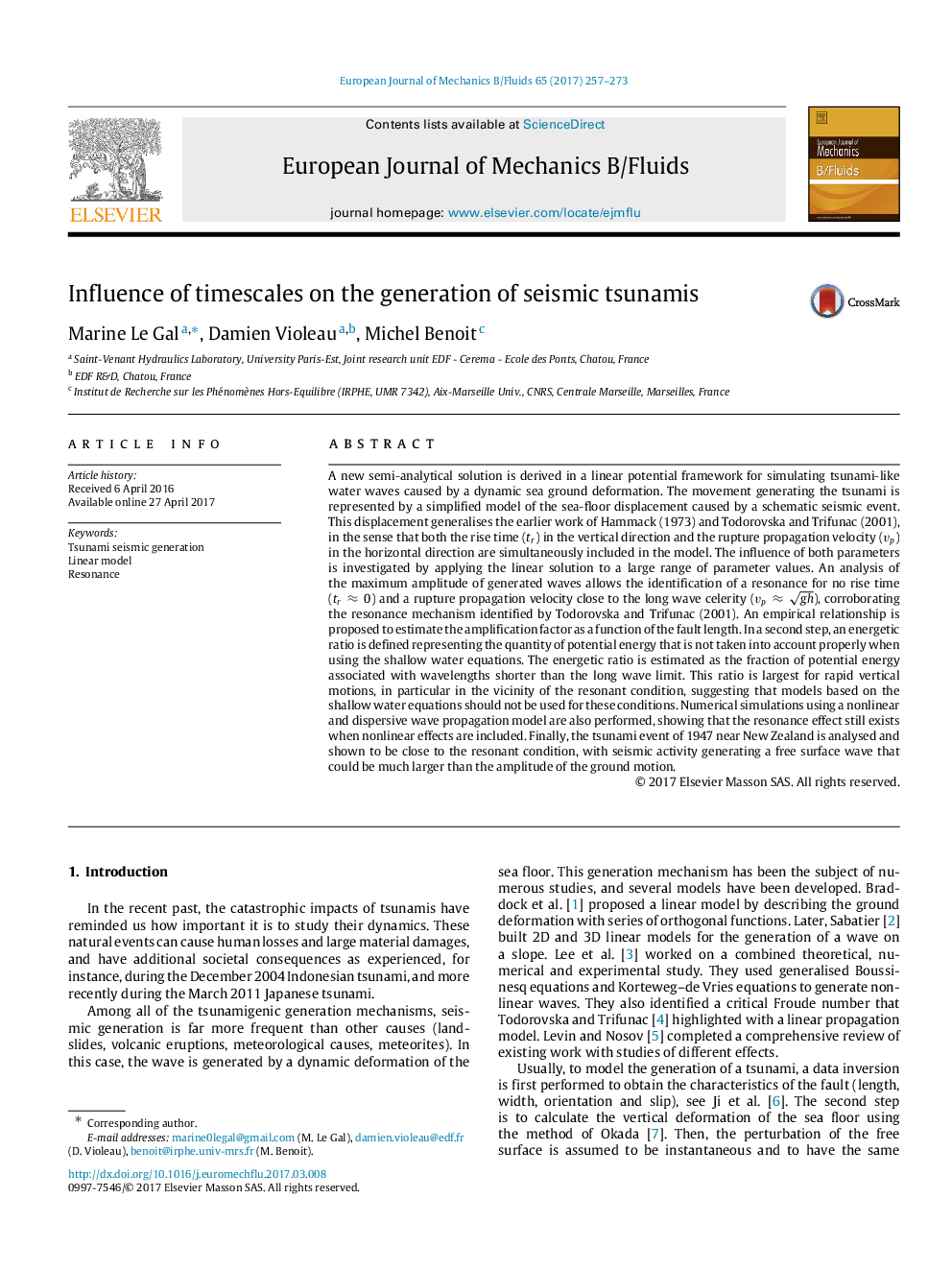| Article ID | Journal | Published Year | Pages | File Type |
|---|---|---|---|---|
| 4992278 | European Journal of Mechanics - B/Fluids | 2017 | 17 Pages |
Abstract
A new semi-analytical solution is derived in a linear potential framework for simulating tsunami-like water waves caused by a dynamic sea ground deformation. The movement generating the tsunami is represented by a simplified model of the sea-floor displacement caused by a schematic seismic event. This displacement generalises the earlier work of Hammack (1973) and Todorovska and Trifunac (2001), in the sense that both the rise time (tr) in the vertical direction and the rupture propagation velocity (vp) in the horizontal direction are simultaneously included in the model. The influence of both parameters is investigated by applying the linear solution to a large range of parameter values. An analysis of the maximum amplitude of generated waves allows the identification of a resonance for no rise time (trâ0) and a rupture propagation velocity close to the long wave celerity (vpâgh), corroborating the resonance mechanism identified by Todorovska and Trifunac (2001). An empirical relationship is proposed to estimate the amplification factor as a function of the fault length. In a second step, an energetic ratio is defined representing the quantity of potential energy that is not taken into account properly when using the shallow water equations. The energetic ratio is estimated as the fraction of potential energy associated with wavelengths shorter than the long wave limit. This ratio is largest for rapid vertical motions, in particular in the vicinity of the resonant condition, suggesting that models based on the shallow water equations should not be used for these conditions. Numerical simulations using a nonlinear and dispersive wave propagation model are also performed, showing that the resonance effect still exists when nonlinear effects are included. Finally, the tsunami event of 1947 near New Zealand is analysed and shown to be close to the resonant condition, with seismic activity generating a free surface wave that could be much larger than the amplitude of the ground motion.
Keywords
Related Topics
Physical Sciences and Engineering
Chemical Engineering
Fluid Flow and Transfer Processes
Authors
Marine Le Gal, Damien Violeau, Michel Benoit,
